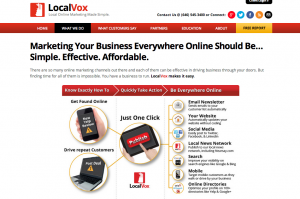 Mobile technology is driving fundamental shifts in behaviors and expectations. For marketers, keeping up with not only the latest technology but also the new consumer mindset can be dizzying.
Mobile technology is driving fundamental shifts in behaviors and expectations. For marketers, keeping up with not only the latest technology but also the new consumer mindset can be dizzying.

Conventional wisdom is quickly being upended when it comes to the mobile platform. Not long ago, for instance, it was assumed that consumers wanted snackable content on smartphones and would be unlikely to watch full movies or TV shows on a small screen or read long articles. However, 53 percent of mobile viewing time globally involves video content longer than 30 minutes, according to Ooyala. And publishers are finding that audiences do more than just check the latest headlines. Buzzfeed’s mobile phone readers spent an average of 25 minutes with a 6,000-word story the site published in January.
Mobile has become the prime screen for content consumption, one of JWT’s “10 Mobile Trends for 2014 and Beyond.” Other top trends from our latest report that marketers should be closely watching include:
Wearables break out:
Mobile is becoming a whole body experience as wearable tech expands from Kickstarter projects to mass-market products from major brands. It’s early days, however, and we’ll likely see the devices, form factors, and software evolve considerably before winning broad adoption.
For marketers, wearable devices represent a new platform on which to engage consumers with highly customized content, as brands will have extensive data on the user and his context. The challenge will be getting permission to enter this space. Still, the potential is exciting. For instance, at the Mobile World Congress in Barcelona this past February, the augmented reality firm Blippar showed off a Google Glass application that brings augmented reality to the device, providing the wearer with information on the fly.
Mobile changes how we socialize:
Unique social tools for mobile are going well beyond what exists for the desktop, and people are spending ever more time with them. Sharing and communicating can be ephemeral, visual, anonymous, or passive; it may be public or, increasingly, private. And it’s much more continuous, since mobile phones are always with us.
With consumers using multiple social and communications apps, brands have an increasingly challenging job of determining which ones fit their voice and audience and how best to join the conversation. Some of these platforms have proved inspiring for brands (especially visual forums like Vine and Instagram), while others, like Snapchat, are more difficult to join. Notably, messaging apps are evolving into complex platforms that offer brands many interesting ways to speak to consumers and even sell directly to customers.
Shifting to visual:
Mobile devices — equipped with a dual-sided camera, touch screen, and keyboard that easily shifts from text over to emoji — are helping to drive the shift to a more visual vocabulary and aesthetic, which minimizes or even supplants the need for text.
We have seen the mushrooming of mobile social networks like Snapchat, Instagram, and Vine that put images at the fore and messaging apps that let users communicate with stickers, photos, or video. Meanwhile, search is getting more visual thanks in part to image recognition technology, while dating apps like Tinder emphasize pictures over profiles. With more consumers speaking in visual — and many becoming adept at creating memorable images, from selfies to inventive Vines — a high degree of visual literacy will be imperative for brands.
As we noted in our mobile trend report last year, marketers will increasingly shift away from looking at how they can advertise on mobile platforms and focus on how they can blend in to the mobile (and omnichannel) lifestyle. The challenge will be to send contextually relevant messaging to those who opt in or provide enough utility or value to become integrated into the mobile routine.








